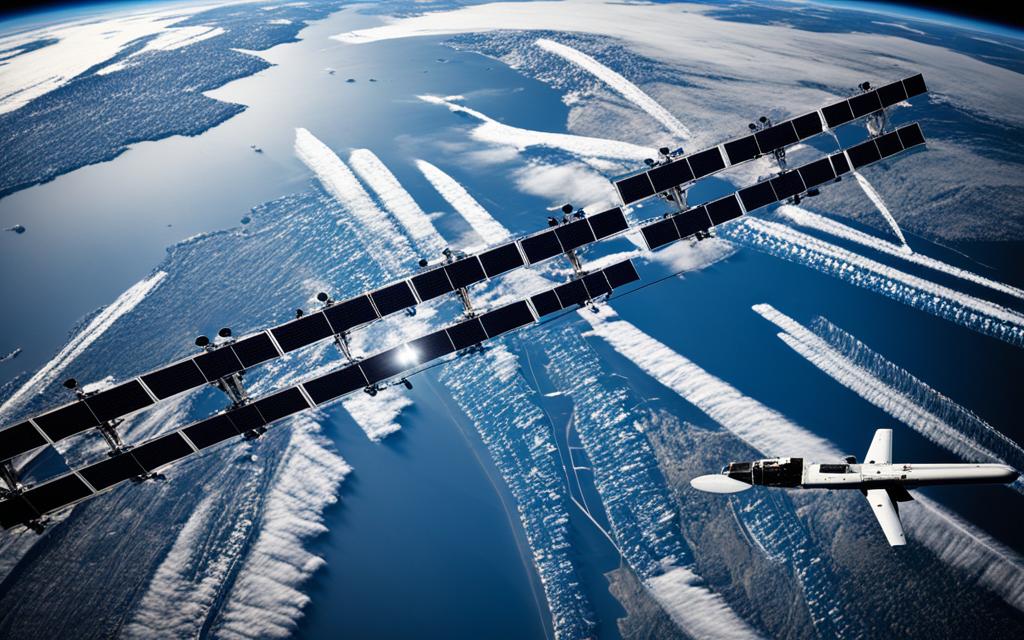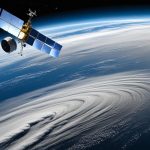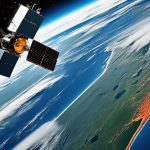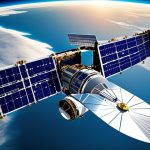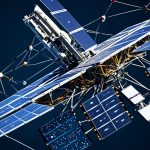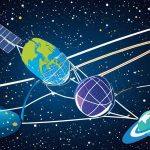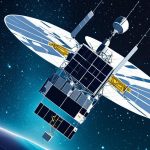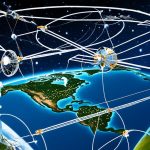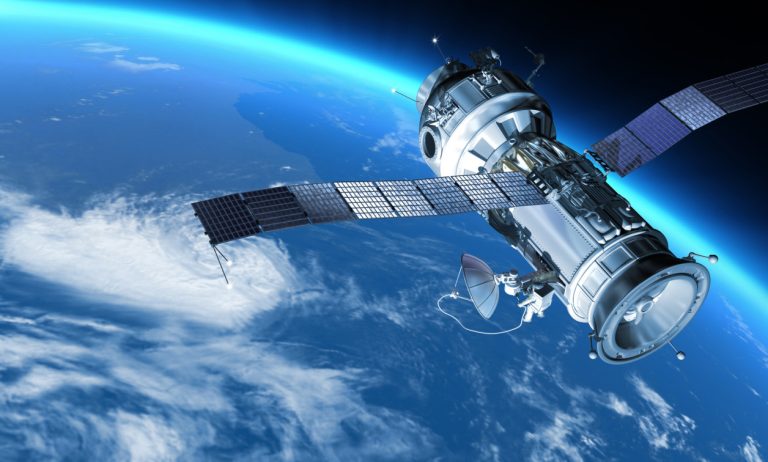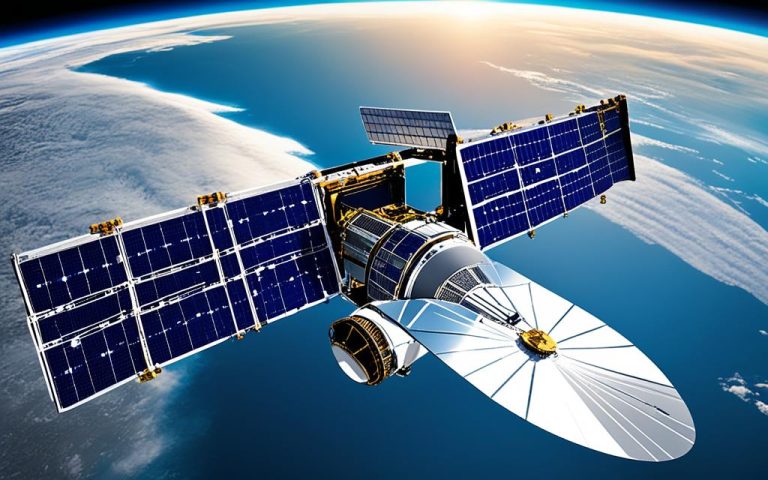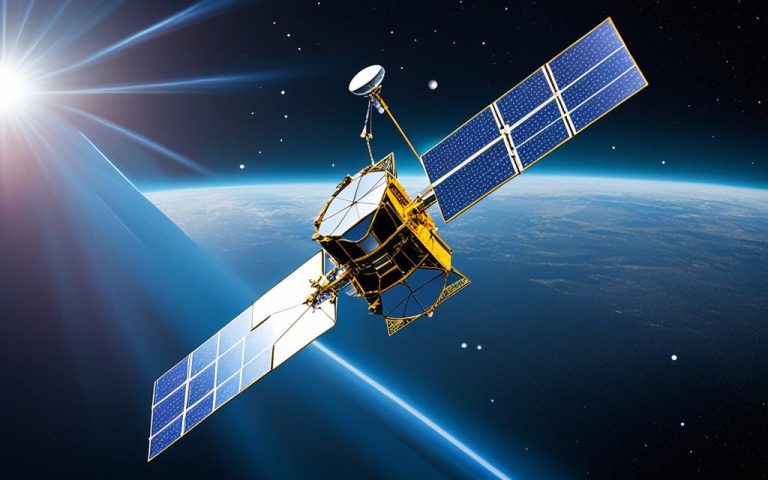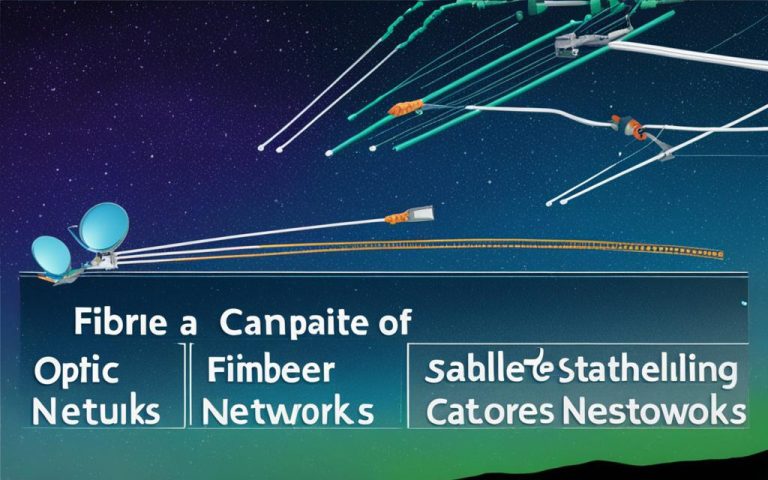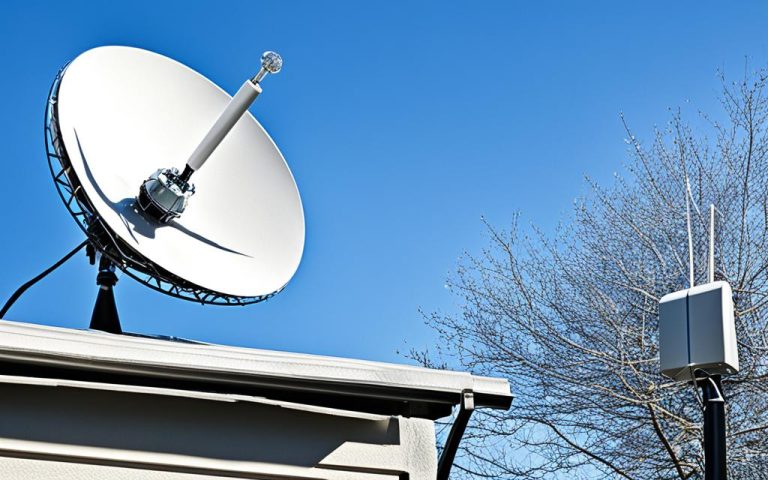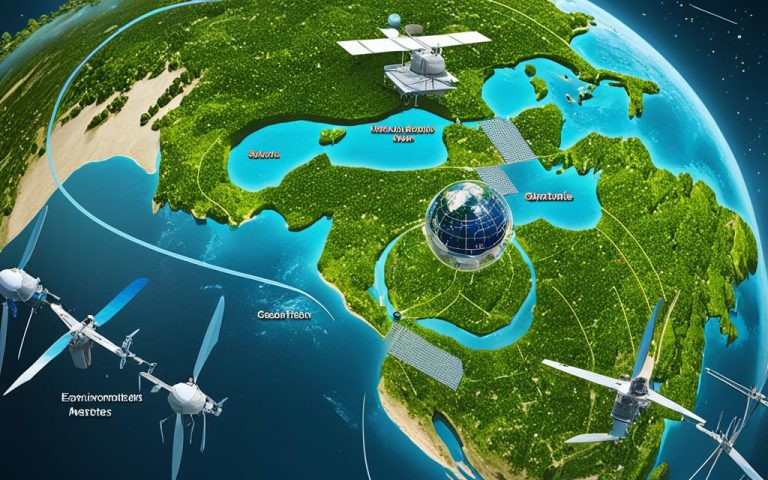Earth observation satellites have revolutionized our understanding of our planet and its complexities. Since the launch of the first Meteosat weather satellite by the European Space Agency (ESA) in 1977, these satellites have played a crucial role in monitoring global change, providing global insights, and fostering a sustainable future.
These satellites are instrumental in various domains, including monitoring weather patterns, forecasting weather events, improving agricultural practices, enhancing maritime safety, aiding in disaster response, and providing valuable information for everyday applications. By gathering data from space, they offer a comprehensive view of our planet and help us make informed decisions.
The demand for satellite data has been increasing steadily, as it provides us with valuable information that is essential for monitoring our planet’s health and addressing global challenges. ESA is dedicated to developing advanced satellite technologies to further our understanding of Earth and support sustainable policymaking for the future.
The Role of Earth Observation Satellites
Earth observation satellites play a vital role in various areas, including weather forecasting, answering crucial Earth science questions, improving agricultural practices, ensuring maritime safety, and supporting disaster response efforts. These satellites collect a wide range of data, providing valuable insights into our planet’s dynamics and enabling informed decision-making in various industries.
Earth observation satellites capture a diverse range of data using advanced technological instruments. This data includes:
• Visible-light images: These images provide valuable information about cloud cover, atmospheric conditions, and the Earth’s surface features.
• Infrared data: The infrared data collected by satellites helps in analyzing temperature patterns, vegetation health, and identifying specific land and water features.
• Microwave data: Microwave sensors on satellites are used to observe the Earth’s surface, measure sea surface temperature, and monitor precipitation patterns.
The continuous flow of satellite data plays a crucial role in weather forecasting and understanding the Earth’s dynamic systems. Scientists analyze this data to study weather patterns, climate change, natural disasters, land use, and other important phenomena. It helps them develop accurate weather models, provide early warnings for severe weather events, and support informed decision-making in sectors like agriculture, transportation, and emergency management.
Enhancing Agricultural Practices
Earth observation satellites contribute significantly to improving agricultural practices. By monitoring vegetation health, soil moisture, and crop conditions, satellite data enables farmers and agricultural experts to make informed decisions regarding irrigation, pest management, and yield forecasting. This data helps optimize resource allocation, increase crop productivity, and promote sustainable agriculture.
Ensuring Maritime Safety
Maritime safety is another critical area where Earth observation satellites play an essential role. Satellite-based systems provide valuable information on oceanographic conditions, sea surface temperatures, and weather patterns that support safe navigation and efficient maritime operations. They help monitor harmful algal blooms, oil spills, and other environmental hazards, enabling timely response and protecting marine ecosystems.
Supporting Disaster Response Efforts
Earth observation satellites have proven invaluable in supporting disaster response efforts. They enable rapid assessment of affected areas, identification of damaged infrastructure, and monitoring changes in land cover following natural disasters. This data aids emergency responders, policymakers, and humanitarian organizations in effectively coordinating relief efforts and implementing measures to mitigate future risks.
By harnessing the power of satellite data, we can gain valuable insights into our planet’s intricate processes, fostering sustainable development and informed decision-making in various sectors.
| Applications | Benefits |
|---|---|
| Weather forecasting | Accurate prediction of weather patterns and early warnings for severe weather events |
| Agricultural practices | Optimization of irrigation, pest management, and yield forecasting for enhanced crop productivity |
| Maritime safety | Monitoring of oceanographic conditions, sea surface temperatures, and weather patterns for safe navigation and efficient maritime operations |
| Disaster response | Rapid assessment of affected areas and coordination of relief efforts for efficient disaster response |
Earth Observation Satellites for Climate Change Study
Earth observation satellites play a crucial role in studying climate change and its impact on our planet. These satellites enable scientists to monitor various environmental parameters on a global scale, providing valuable insights that contribute to our understanding of the state of the Earth. By collecting data on sea level rise, ice melting, deforestation, and air quality, these satellites equip us with the information needed to address the challenges posed by climate change.
The data collected from Earth observation satellites is not only essential for scientific research but also supports the implementation of legislation on climate change. For example, initiatives like the Green Deal rely on accurate and comprehensive data to develop policies and strategies that drive environmental sustainability. By combining satellite data with models and digital technologies, policymakers can make informed decisions that promote a sustainable future.
Monitoring Environmental Parameters
Earth observation satellites provide a global perspective on key environmental parameters, allowing scientists to track changes over time. Some of the parameters that can be monitored include:
- Sea level rise: Satellite measurements help to monitor and understand the rate of sea level rise, which is a direct consequence of climate change.
- Ice melting: Satellites can observe changes in the extent and thickness of polar ice, providing critical data for studying the impact of climate change on polar regions.
- Deforestation: By monitoring changes in vegetation cover, satellites contribute to the assessment of deforestation rates and support conservation efforts.
- Air quality: Satellite observations of atmospheric composition enhance our understanding of pollution sources and contribute to the development of air quality management strategies.
By continuously collecting data on these environmental parameters, Earth observation satellites help us stay informed about the state of our planet and guide decision-making processes towards a sustainable future.
| Benefit | Insight |
|---|---|
| Enhanced Understanding of Climate Change | By monitoring environmental parameters, satellites provide comprehensive data that improves our understanding of climate change and its impacts. |
| Scientific Research | Satellite data contributes to scientific research on climate change, allowing scientists to analyze trends, create models, and develop mitigation strategies. |
| Legislation and Policy | The data from Earth observation satellites supports the implementation of legislation and policy initiatives that aim to address climate change and promote sustainability. |
| Global Insights | Earth observation satellites provide a global perspective, enabling us to monitor changes in environmental parameters worldwide and gain valuable insights into the challenges and opportunities presented by climate change. |
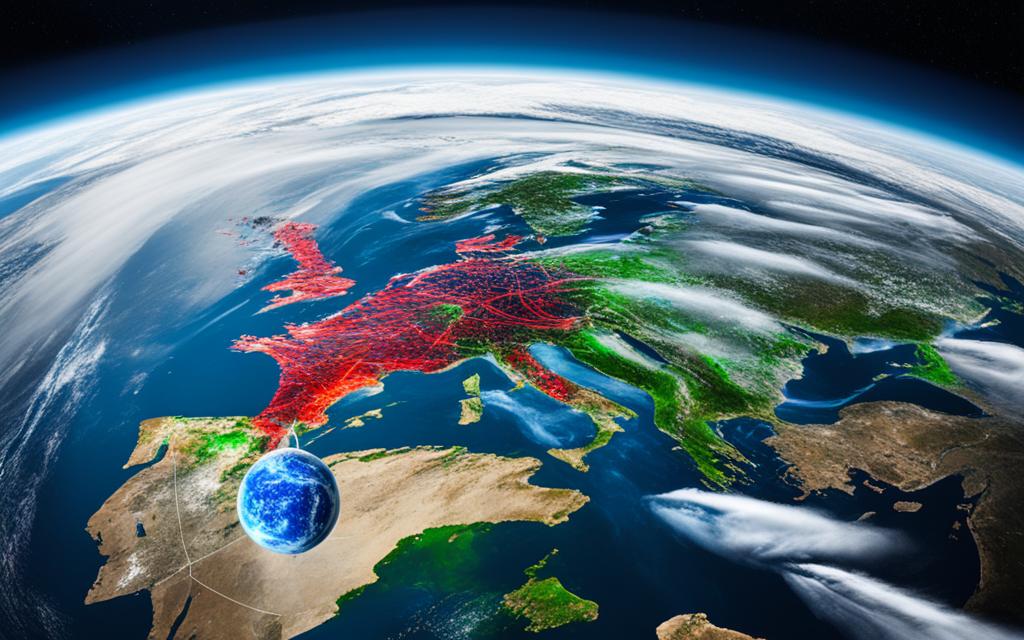
“Satellite data plays a crucial role in studying climate change and its impact on our planet. It provides valuable information for policymakers, researchers, and organizations working towards a sustainable future.” – Dr. Sarah Johnson, Climate Scientist
Highlighting Earth Observation Missions
One notable Earth observation programme is Copernicus, which celebrates its 25th anniversary this year. Copernicus has evolved from a research and development initiative to an operational long-term mission. It provides valuable support to land monitoring, air quality monitoring, disaster management, and scientific research. The programme also offers free and open data, benefiting both commercial and business entities. Copernicus is a source of pride for the European Space Agency and its partners, demonstrating the value of Earth observation satellites in various domains.
The Value of Copernicus Earth Observation Mission
The Copernicus Earth Observation Mission has revolutionized the way we monitor and understand our planet. Through continuous research and development, Copernicus has transformed into an operational mission that provides critical data for various applications. The mission’s focus on land monitoring helps track changes in vegetation, urban areas, and water resources, supporting sustainable development. Additionally, its air quality monitoring capabilities contribute to addressing environmental challenges and improving public health.
Disaster management also benefits from Copernicus, as the mission enables early detection and response to natural disasters such as floods, fires, and earthquakes. Copernicus’ contribution to scientific research is another significant aspect. The mission’s data supports Earth scientists in studying climate change, ecosystems, and biodiversity, providing valuable insights into the state of our planet.
The Data Value and Accessibility
One of the key advantages of the Copernicus Earth Observation Mission is the vast amount of data it collects and makes freely available to the public. This open data policy ensures that researchers, policymakers, and businesses can utilize the information to address global challenges and drive innovation. The data generated by Copernicus serves as a valuable resource for enhancing decision-making processes in various sectors, including agriculture, transport, energy, and urban planning.
The Copernicus Earth Observation Mission has also been instrumental in fostering collaboration and partnerships. By providing accessible data, the mission encourages stakeholders from different sectors to work together, leveraging Earth observation technologies for a sustainable future.
The success of the Copernicus Earth Observation Mission is a testament to the continuous research and development efforts in the field of Earth observation. It highlights the importance of investing in such missions to address global challenges, enhance our understanding of the Earth, and make informed decisions for a better future.
| Benefits of Copernicus Earth Observation Mission | Data Applications |
|---|---|
| Supports land monitoring | Tracking changes in vegetation and urban areas |
| Provides air quality monitoring | Tackling environmental challenges and improving public health |
| Enables disaster management | Early detection and response to natural disasters |
| Contributes to scientific research | Studying climate change, ecosystems, and biodiversity |
| Promotes collaboration and partnerships | Utilizing Earth observation data in various sectors |
Job Opportunities in Earth Observation
Earth observation presents a multitude of job opportunities across various disciplines, catering to the needs of this growing field. From engineers who design and build satellites to scientists who analyze data, there is a demand for diverse expertise. Additionally, professionals in digital technologies, such as artificial intelligence and machine learning, play a crucial role in enhancing the value of satellite data. The economic sector is also instrumental, with venture capitalists evaluating the commercial value of Earth observation technologies. European Space Agency (ESA) actively seeks professionals in these domains to support its Earth observation programs and contribute to the advancement of this field.
Here are some key roles within the realm of Earth observation:
- Engineers: Engineers are critical for the development and construction of satellites. Their expertise ensures that these instruments can effectively collect and transmit data from space. Whether it’s mechanical, electrical, or aerospace engineering, their contributions help shape the future of Earth observation.
- Scientists: Scientists are involved in deciphering the vast amounts of data collected by satellites. With their analytical skills and collaboration with the scientific community, they unravel valuable insights about our planet and its changes over time.
- Digital Technology Experts: The integration of digital technologies, such as artificial intelligence and machine learning, has revolutionized Earth observation. Experts in these fields apply their knowledge to improve data analysis, develop advanced algorithms, and automate processes, thereby increasing the efficiency and accuracy of satellite data interpretation.
- Geographers: Geographers play a pivotal role in Earth observation, utilizing their expertise to understand and analyze geographical data. Their insights help in assessing changes in land use, urban development, and environmental patterns, among other valuable applications.
- Venture Capital Specialists: The economic sector plays an essential role in evaluating and supporting the commercial value of Earth observation technologies. Experts in venture capital bring their knowledge to assess the feasibility, market potential, and financial viability of these technologies, contributing to their successful implementation and growth.
If you have a passion for Earth observation and possess expertise in any of these fields, ESA invites you to join their team. Working alongside motivated professionals and leveraging academic and cultural diversity, ESA offers an appealing and inspiring working environment. Whether you excel in engineering, science, technology, or economics, there are rewarding job opportunities awaiting you in this exciting and rapidly evolving field.
Working Environment at ESA
The working environment at ESA is characterized by highly motivated individuals with diverse academic backgrounds. The exchange of knowledge and experience among colleagues is valued, fostering a culture of continuous learning. ESA operates in different contexts across its establishments, including operations, satellite development, and data exploitation. This interaction with different groups and external partners creates a unique and appealing working environment for those interested in joining ESA. Commitment to diversity and inclusiveness is a core value at ESA, and applications from qualified candidates of all backgrounds are encouraged.
Benefits of the Working Environment at ESA
- Motivated people: ESA attracts driven individuals who are passionate about space exploration and technology. The collaboration among motivated individuals creates an inspiring atmosphere to thrive in.
- Academic expertise: With professionals from various academic backgrounds, including engineering, physics, computer science, and more, ESA provides a platform for sharing knowledge and expertise.
- Cultural diversity: ESA embraces the diversity of its workforce, fostering an inclusive environment that values different perspectives and experiences.
- Working contexts: From satellite development to data exploitation, ESA offers a diverse range of working contexts, allowing employees to explore different areas and contribute to various projects.
The working environment at ESA promotes professional growth and collaboration, making it an attractive choice for individuals seeking a fulfilling career in the space industry. The table below highlights the key aspects of the working environment at ESA:
| Aspect | Description |
|---|---|
| Motivated People | Highly driven individuals passionate about space exploration |
| Academic Expertise | Wide range of professionals with diverse academic backgrounds |
| Cultural Diversity | Inclusive environment that values different perspectives and experiences |
| Working Contexts | Opportunities to work in satellite development, operations, and data exploitation |
Conclusion
Earth observation satellites have revolutionized our understanding of the Earth and its dynamics. These satellites provide valuable data for weather forecasting, climate change studies, disaster management, agricultural planning, and urban development. They play a critical role in informing policymaking for a more sustainable future. As the demand for satellite data continues to grow, organizations like the European Space Agency (ESA) are dedicated to developing advanced technologies to further our understanding of our planet and provide global insights that aid in decision-making.
Earth observation satellites are essential tools in monitoring the health of our planet and ensuring a sustainable future for generations to come. With their ability to capture high-resolution images and collect data on various environmental parameters, these satellites contribute to the ongoing efforts of scientists, policymakers, and industry professionals in addressing the challenges of climate change and fostering sustainable development. By harnessing the power of Earth observation satellites, we can make informed decisions and implement effective strategies to mitigate the impact of climate change, protect our ecosystems, and promote a better and more sustainable future for all.
Through continuous research, innovation, and collaboration, Earth observation satellites will continue to play a vital role in providing the global insights needed to tackle environmental challenges and shape policies for a sustainable future. It is crucial to recognize the importance of investing in satellite technologies and supporting organizations like ESA to ensure the continued success and advancement of Earth observation initiatives. By leveraging the power of these satellites, we can gain a comprehensive understanding of our planet, make informed decisions based on accurate data, and work towards creating a more sustainable and resilient world.
FAQ
What is the role of Earth observation satellites?
Earth observation satellites are essential in monitoring global change, forecasting weather, improving agricultural practices, enhancing maritime safety, aiding in disaster response, and providing valuable information for everyday applications.
What kind of data do Earth observation satellites collect?
Earth observation satellites collect a wide range of data, including visible-light images, infrared data for temperature and vegetation analysis, and microwave data for observing the Earth’s surface. This data is used to study weather patterns, climate change, natural disasters, land use, and other important phenomena.
How do Earth observation satellites contribute to climate change studies?
Earth observation satellites enable scientists to monitor environmental parameters such as sea level rise, ice melting, deforestation, and air quality on a global scale. The data collected from these satellites helps us understand the state of our environment, contributes to scientific research, and supports the implementation of legislation on climate change.
Can you provide an example of a notable Earth observation programme?
Copernicus is a notable Earth observation programme that provides valuable support to land monitoring, air quality monitoring, disaster management, and scientific research. It offers free and open data, benefiting both commercial and business entities.
What job opportunities are available in the field of Earth observation?
Earth observation requires a diverse range of professionals, including engineers, scientists, medical professionals, geographers, experts in digital technologies, and individuals with expertise in the economic sector.
What is the working environment like at ESA?
The working environment at ESA is characterized by highly motivated individuals with diverse academic backgrounds. There is a culture of continuous learning, with knowledge and experience being exchanged among colleagues. ESA operates in different contexts across its establishments, creating a unique and appealing working environment.
How do Earth observation satellites revolutionize our understanding of the Earth?
Earth observation satellites provide valuable data for weather forecasting, climate change studies, disaster management, agricultural planning, and urban development. They play a critical role in informing policymaking for a more sustainable future.

